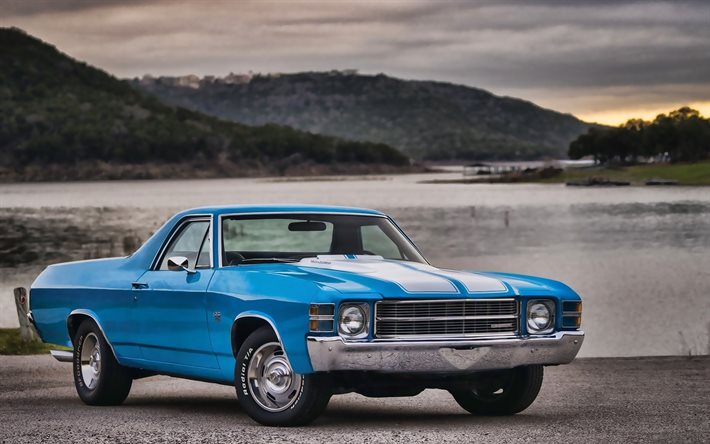
The Ford Mustang has been the fastest muscle car in history, but the Chevrolet Camaro SS joins the ranks of the most powerful muscle cars. It shares the same V-8 as the Ford Mustang's engine and is lighter that the Mustang. While it might not be the fastest muscle vehicle of all time the Buick Kylark GSX Stage1 is still a worthy contender.
Dodge's SRT Hellcat is the fastest muscle car engine
Dodge engineers have produced incredible power with its new Challenger, and Charger models. These two models are among the fastest muscle cars anywhere in the world. The Dodge Challenger SRT Demon 2018, which is the fastest car in its class, also sets records. The Dodge Challenger SRT Hellcat is the fastest engine for muscle cars, with ten trim levels and supercharged performance.

Ford Mustang is still one of the most powerful muscle cars ever made
Ford Mustang is the iconic American car. It was first introduced in 1964 and sold more than a million units in its first 18 months. Although it was revolutionary at the time it was not forgotten that Ford's drivers are what made it great. You can now find a variety of trim levels and customized options to suit your needs. With a starting price just $27.205, the Mustang will continue to be one of the fastest muscle cars in history.
Chevrolet Camaro SS muscle car is the fastest of the 21st century
Among the many models of the 2010 Chevrolet Camaro SS, the high-powered 6.2-liter V8 offers 422 horsepower and 408 pound-feet of torque. The V8 engine is mated to a six-speed manual transmission and produces enough torque for an 0-to-60-mph sprint in 4.8 seconds. You can hear the V8 growl and crackles in this car, along with a strong steering feeling. The Camaro SS is unmatched in performance and can reach speeds of more than 155 mph.
Buick Skylark Stage 1 GSX Stage
The GSX is one of the most rare and desirable Buick muscle cars. This rare model is both a historic vehicle and a performance vehicle, as only 488 were made. This rare vehicle is highly sought-after and comes with a high price tag. A restored '70 model is available for as low as $122,000. If you're looking for the best bang on your buck, you might want to consider a model older than '70.
Dodge Charger500 426 is a rare, powerful vehicle
Dodge Chargers are some of the most rare and powerful cars on the roads. The company first developed this car in the 1950s and was very successful. Drag racing fans loved the car's flying roof and recessed grille. It was not capable of reaching superspeedways' top speeds, however. These problems were overcome by the company, who worked round the clock to make it as aerodynamically possible.

Plymouth Hemi Cuda is an muscle car equipped with carbon fiber rims
This 1970-71 Plymouth HEMI 'Cuda convertible is one of a sort. It was triple coloured and was one 14-car batch. It was also the fifth vehicle to feature the four-speed manual drive gearbox. The 'Cuda was one of only five built with the four-speed manual gearbox. The car's carbon-fiber rims enhance its uniqueness. Additionally, its traditional design makes the car an excellent investment.
FAQ
How can I prepare to become a mechanic apprentice?
It is important that you understand the ramifications of your actions. You need to understand the mechanics of cars and how they work. This will help you to plan your first day in the garage.
You also need to know how to fix simple problems such as broken lights, tires, etc.
This article will show you how to diagnose and fix issues.
Also, it is important to know how parts fit together so that you can put them back together.
And finally, you must know how to use tools safely and efficiently.
All these things will help you to become a competent mechanic.
Can I work as an auto mechanic without a degree? Can I study part time?
Although it's not mandatory, a degree can help. Employers will prefer candidates who have completed a degree. It shows you are dedicated and have worked hard to achieve your goals.
But, this doesn't mean you have to stop working while studying. Some universities allow students to complete coursework over the summer holidays and finish their studies later in the year. Others allow students to study part-time all year.
How long is an automotive course?
A course in automotive lasts three years.
The first year is dedicated to theory and learning about cars. Practical training is the second year. You will learn to drive, fix engines and perform other tasks around the car. The last year of your training is spent on practical training, where you learn how to fix real-world problems.
Is it difficult to find a job as a mechanic in the automotive industry?
Yes, it can be very easy. Many garages post their vacancies online. Many people apply simply because they think it might make them feel good. Try applying to a few jobs and seeing if the garages accept student applications. Another option is to ask family members and friends if anyone works in this industry. They may be happy and willing to recommend someone.
Statistics
- Apprentice mechanics earn significantly less hourly than mechanics who have completed training, with a median wage of approximately $14.50 an hour, according to PayScale. (jobhero.com)
- According to the BLS, total auto technician employment is expected to exceed 705,000 by 2030. (uti.edu)
- There were 749,900 jobs available for automotive service technicians and mechanics in 2016, which is expected to grow by six percent through 2026. (jobhero.com)
External Links
How To
How to Become an Automotive Technician
An automotive technician is responsible for vehicle maintenance and repair. He/she is employed at automobile dealerships, garages, service centres, and auto shops. Customers can rely on him/her to fix their cars, trucks and motorcycles. An automotive technician must be capable of diagnosing problems and making repairs safely, accurately and efficiently.
An associate degree from a vocational school is required for anyone who wishes to become an automotive technician. After completing this program, he/she must pass the National Institute for Automotive Service Excellence (ASE) certification exam. ASE stands to American Society of Mechanical Engineers. There are two sections to the ASE certification test. The first section tests for mechanical knowledge, the second for practical skills. To take the test, you must visit one of the approved testing locations. You can find these locations online or through your local automobile dealer.
Before becoming an automotive technician, a candidate must pass the test. This process is different depending on where you live. Some states require that candidates attend training courses, while others permit them to learn independently. Some states issue licenses to technicians as soon as they get their license. Others wait until they have worked at least six months as an automotive technician.
To get started as an automotive technician, a person should apply to a local automotive dealership. Once hired, most new employees start out working as apprentices. Apprenticeships last for three years. A student will learn to repair basic things like changing oil, adjusting brakes or replacing tires. They also learn how spark plugs are cleaned and inspect engine compartments. Some students will learn advanced repair techniques, such as changing shocks, installing air filters, and replacing engines. Most schools offer classes during regular business hours. Some schools also offer evening classes when needed.
When a student has completed his/her apprenticeship, they become a journeyman. Journeymen usually spend four to five year learning how to install major systems like transmissions, differentials steering gear, suspensions, drive shafts, and steering gear. They also learn to perform complex repairs, such as remanufacturing engines, rebuilding transmissions, and troubleshooting electrical components. Many employers prefer hiring journeymen because they know the job well and understand what the customer expects.
A candidate who passes all the necessary exams and gets a license might be interested in opening his/her own business. According to the Bureau of Labor Statistics, nearly 1.7 million automotive mechanic jobs were available in 2010. This number was expected increase 18% between 2009 - 2020. A candidate who plans to open a shop should expect to spend many thousands of dollars on equipment and supplies.
Automotive technicians' salaries depend on many factors such as the employer, whereabouts, education level and experience. A jobless person can expect to make $20,000 per year. An individual with a high school diploma can earn about $21,000 per annum. A bachelor's degree is equivalent to approximately $24,000 annually. Technicians with bachelor's degrees earn approximately $27,000 per year. The average annual salary for those with master's degrees was $32,000. Salary increases are common so professionals who make less than $30,000 a year could realistically expect to earn $40,000 over the next few years.